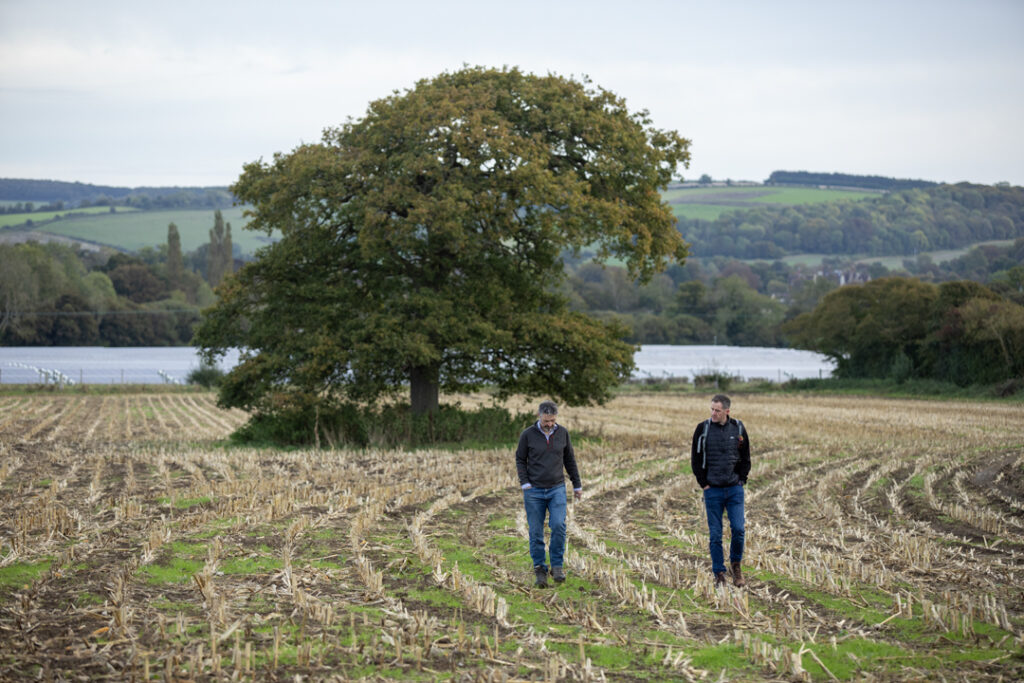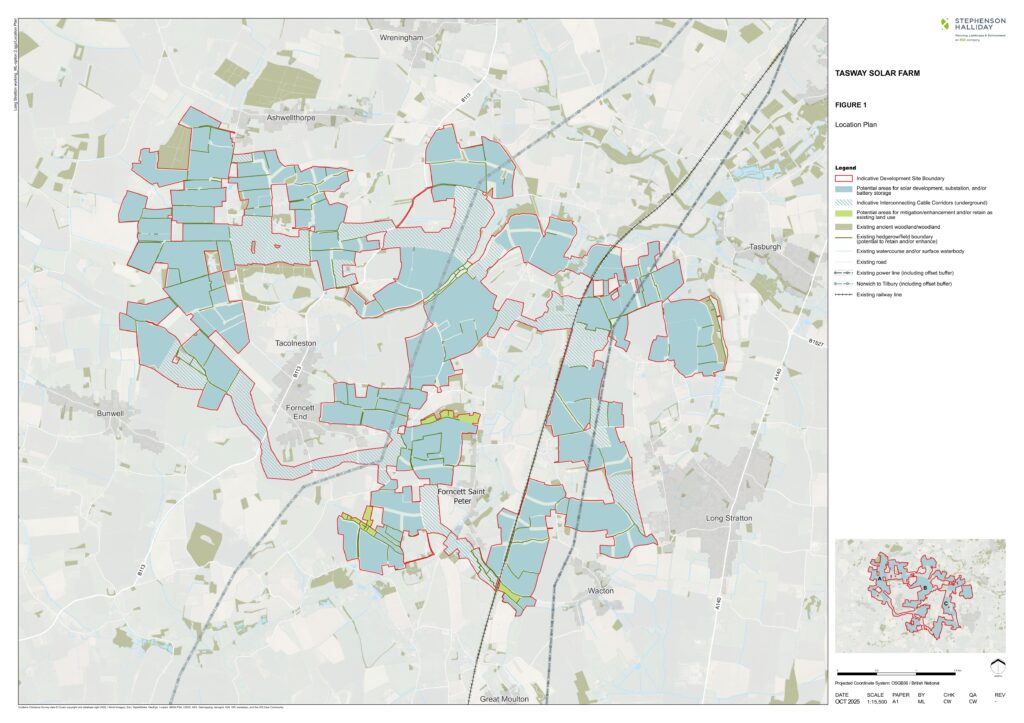About the Project
What is being proposed?
Aukera is bringing forward proposals for a new solar farm in South Norfolk. If consented, Tasway Energy Park would generate up to 700 megawatts (MW) of clean, renewable electricity—enough to power over 200,000 homes each year*, contributing to the UK’s 2030 Clean Power Action Plan. The project is expected to operate for up to 60 years, after which it would be fully decommissioned.
*Based on 2022 generation and assuming average (mean) annual household consumption of 3,240kWh, in line with the latest (January 2024) statistics from the Department for Energy Security and Net Zero.
Our phase 1 consultation presents emerging proposals for the layout and design of the project, including indicative areas for solar panels, potential locations for a Battery Energy Storage System (BESS), and initial options for cabling routes and substation locations. These remain subject to change and will be refined following feedback from this consultation, as well as ongoing environmental and technical assessments.
As the project is over 50MW, it qualifies as a Nationally Significant Infrastructure Project (NSIP) and will be determined through the Development Consent Order (DCO) process by the Secretary of State for Energy Security and Net Zero, with local authorities acting as key consultees.
The vision and design principles for Tasway Energy Park are being developed in parallel with environmental and planning studies. Not all of the land within the project boundary will be used for solar generation, and some land—such as that required for cabling and grid connection—may be located outside the main energy park area. You can find more information on this in the phase 1 consultation brochure, found in documents .
We will continue to refine our proposals through the pre-application process, informed by community and stakeholder feedback.

Who is developing Tasway Energy Park?
Tasway Energy Park is being developed by Aukera, a renewable energy company contributing to the transition to clean energy across Europe. Aukera specialise in energy generation and storage projects, working through the earliest stages of planning to building and operating projects ourselves.
In the UK, Aukera is constructing 250MW of solar in 2025 with an extensive pipeline in planning and development.
We have a steadfast commitment to local communities. We respect the local environment, and offer innovative energy solutions.
Key Benefits of Solar and Battery Storage Projects
Low carbon energy for a greener future
Solar is a clean, renewable energy source, cutting carbon emissions and helping tackle climate change head-on, aligning with the UK Government's 2030 Clean Power Action Plan.
Low-impact, reversible land use
Typically, solar developments remain for a period of up to 60 years, after which time they are decommissioned and deconstructed, preserving the long-term potential of the land.
Supporting grid resilience
Integrated solar and battery storage projects enhance grid resilience by supporting a more balanced and flexible energy mix.
Local economic benefits
Solar and battery storage projects create opportunity for local economic benefits through supply chain opportunities, community investment, and infrastructure improvements.
Enhancing biodiversity
Research by Solar Energy UK shows that, when thoughtfully designed and managed, solar farms can play a valuable role in nature recovery—enhancing habitats for wildflowers, hedgerows, birds, butterflies, and other wildlife.
Our Approach to the Environment
An Environmental Impact Assessment (EIA) is being undertaken for the project. This process involves gathering baseline information on the existing environment, assessing the potential effects of the proposals, and identifying measures to avoid, reduce, or offset any significant adverse impacts where possible. Opportunities to deliver environmental enhancements will also be explored. The findings of the EIA will be reported in an Environmental Statement (ES), which will be submitted as part of the Development Consent Order application.
EIA will be submitted to the Planning Inspectorate (PINS), setting out our proposed approach to the environmental assessment and identifying the topics to be considered. We have also consulted the relevant statutory bodies, including local planning authorities and organisations such as Natural England, the Environment Agency, and Historic England, to obtain their views.
Feedback from this phase 1 consultation, alongside the results of ongoing environmental studies, will inform the further development of the proposals and the EIA.

